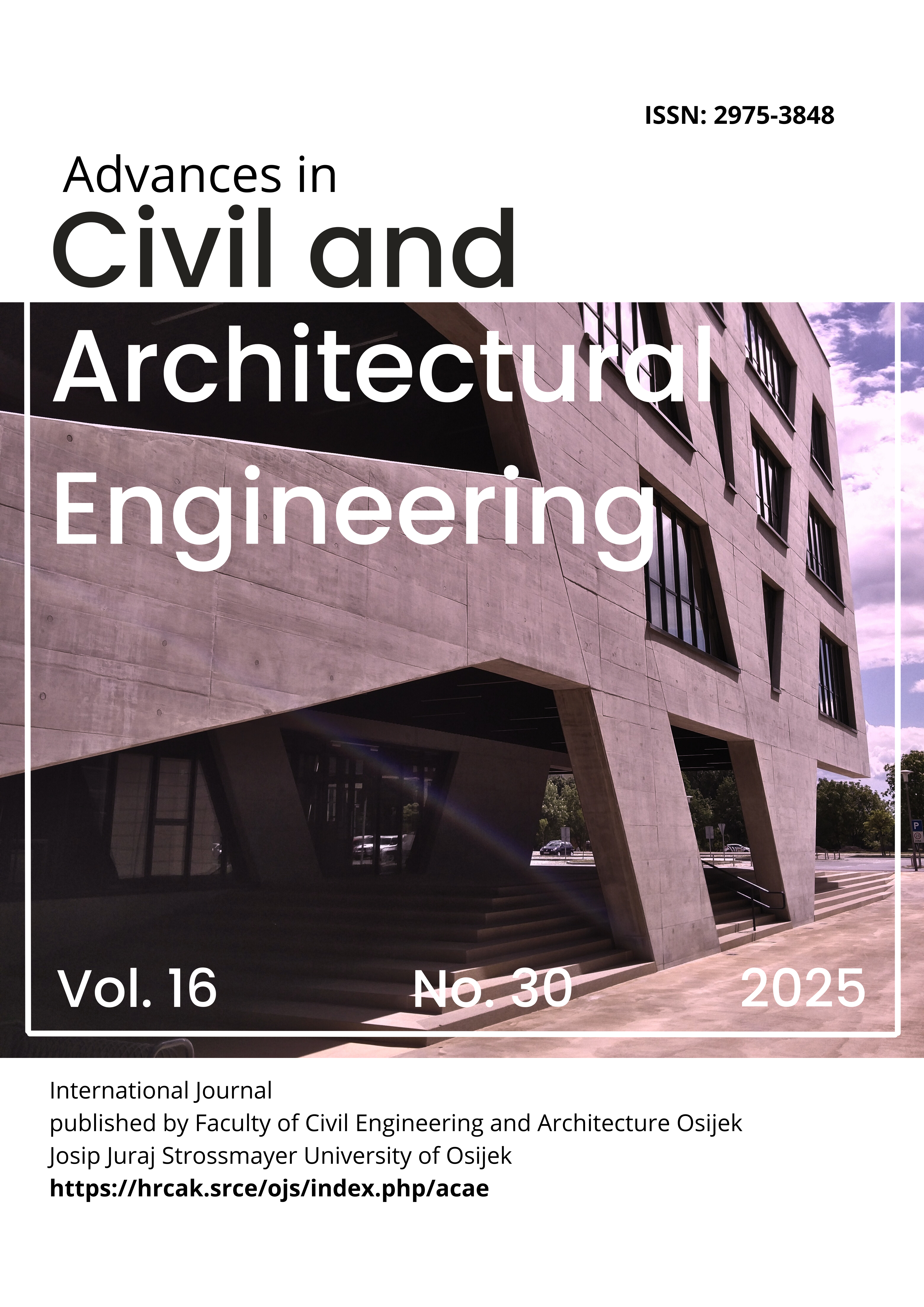Production of eco-friendly lightweight fibrous concrete by replacing half of the sand with PET waste
DOI:
https://doi.org/10.13167/2025.30.10Keywords:
recycled plastic aggregate, lightweight concrete, polypropylene fibersAbstract
This experiment examined the properties of concrete with relatively high proportions of polyethylene terephthalate (PET) plastic waste used as a substitute for sand. In addition to the reference mixture, two percentages of PET shredded-plastic waste from discarded PET bottles were used as sand replacements: 30 and 50 %. To improve the performance of concrete mixtures with a high PET percentage, the concrete was also reinforced by adding polypropylene fibers at a rate of 1,5 % of the concrete-mix volume. Several concrete-mix characteristics were studied, such as workability, dry density, compressive strength, flexural strength, modulus of elasticity, absorption, and ultrasonic pulse velocity test. The use of plastic waste as a half replacement of fine aggregate in concrete has several benefits. One of which is the ability to produce lightweight concrete, where the dry density of concrete with a higher percentage of PET plastic waste of 50 % was 1912,30 kg/m3, and it had an acceptable compressive strength of approximately 25,3 MPa. The current study yielded important findings because recycling a high percentage of PET waste of half sand weight represents a structural advantage in reducing the weight of concrete. The proposed method also produces eco-friendly concrete due to the positive impact on the environment owing to the consumption of PET wastes within concrete mixtures.
Downloads
Published
Issue
Section
License
Copyright (c) 2025 Abbas O. Dawood; Zahraa A. Sabar

This work is licensed under a Creative Commons Attribution 4.0 International License.

